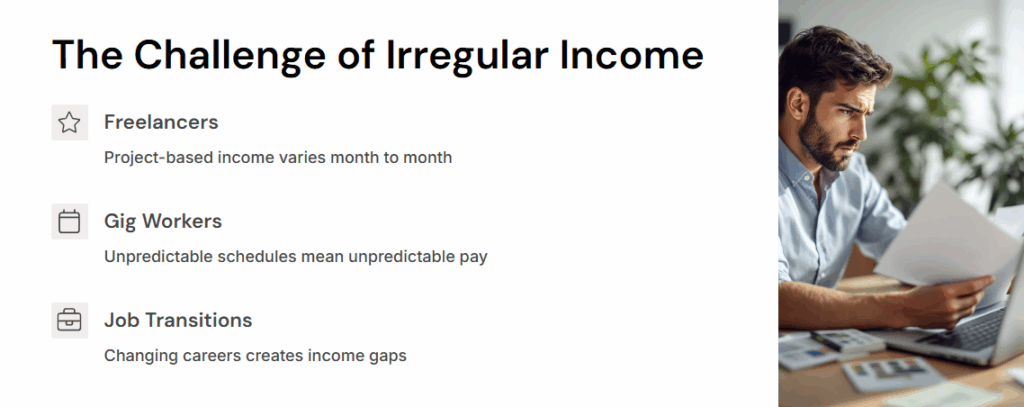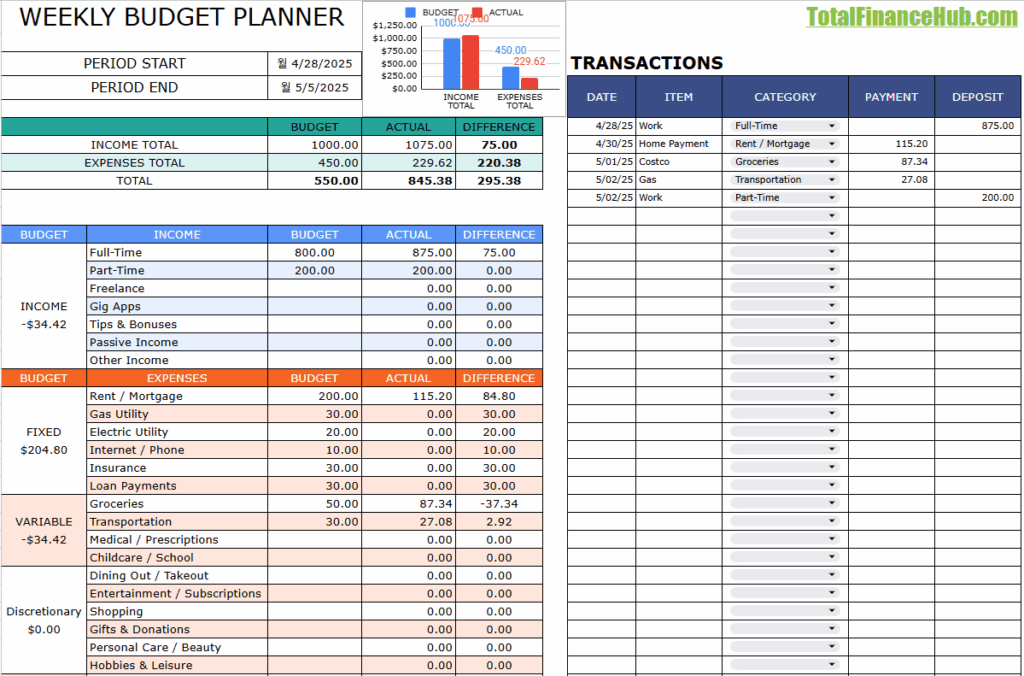Let’s face it: budgeting is already hard — and it’s even tougher when your income isn’t stable. Maybe you’re a freelancer, a gig worker, or just going through a job transition. Whatever the reason, not knowing exactly when or how much you’ll get paid doesn’t mean you can’t plan your money. It just means you need a flexible system.
Here’s how to create a weekly budget — even when your income is all over the place.
A Simple, Real-Life Plan for Dealing with Unpredictable Income
📌 Step 1: Separate Your Costs — What Must Be Paid, No Matter What?
Start by listing two types of expenses:
- Fixed Costs: These don’t change much each month. (e.g., rent, insurance, minimum loan payments)
- Flexible Costs: These are more within your control. (e.g., groceries, gas, takeout, streaming services)
🎯 Your goal: Figure out the bare minimum you need each week to survive — no fluff, no extras.
We call this your Survival Budget.

🧾 Step 2: Create Your “Survival Budget”
This is your no-income fallback plan. What would it cost to keep your life running?
Here’s a sample:
| Category | Weekly Amount |
|---|---|
| Rent | $250 |
| Utilities | $40 |
| Groceries | $75 |
| Gas/Transport | $30 |
| Phone | $15 |
| Total (Min.) | $410 |
This doesn’t mean you’ll only spend this much every week — but you now know the least amount you need to cover your basics.
📥 Step 3: Paycheck Buffering – When You DO Get Paid
When income does come in (whether $200 or $2,000), follow this rule of thumb:
✅ Cover next week’s Survival Budget first
✅ Then: Save → Catch up on flexible expenses → Optional extras
You’re building a cushion so you’re not panicking during dry weeks.
💡 Step 4: Use Buckets — Physical or Digital
You’ve probably heard of the envelope system. It still works. But now, it’s easier with digital apps.
2 Ways to Budget Weekly with Irregular Pay:
- Cash Envelope System: Literally use envelopes for groceries, gas, bills, and stash cash in them.
- Digital Buckets: Use tools like YNAB, Qube, or even Google Sheets with separate tabs or categories.
💡 We’ve created a simple yet powerful Weekly Budget Google Sheet — complete with automatic formulas and charts. It’s easy to use, and you can quickly see how your spending compares to your budget at a glance.

📆 Step 5: Expect High Weeks and Low Weeks
Your income may go up and down — so your budget should bend with it.
Here’s how to stay ahead:
- During high-income weeks: cover future basics, stash some savings
- During low-income weeks: live off your previous buffer
- Avoid “lifestyle creep” after a big check — stay consistent
Real Talk: This Isn’t About Perfection. It’s About Control.
You won’t get it right every week. And that’s OK.
What matters is:
- You’re watching your money
- You’re not spending blindly
- You’re building resilience, one week at a time
The goal isn’t just to budget — it’s to breathe easier, even when money’s tight.
FAQ: Common Questions
Q: How do I budget if I don’t know my income?
A: Start with a survival budget and treat income like irregular bonuses. Always fund your essentials first.
Q: What’s the best method for unpredictable income?
A: Envelope-style systems or digital buckets help you keep track in real-time. You need flexibility, not a fixed spreadsheet.
Q: Can I still use the 50/30/20 rule?
A: You can adapt it! Try 50% for essentials, 30% for buffer/savings, 20% for everything else — but adjust as needed.

Related Resources
- How to Save 10K in 6 Months on a Low Income
- 5 Key Strategies for Securing Low-Interest Loans
- Free 26-Week $10K Savings Tracker: Your Simple Path to Big Goals
Final Thoughts
Even if you don’t have a regular paycheck, you still have the right to feel in control of your money.
This budget won’t be perfect — but it will be yours. And it will get better every week you try.
Don’t wait for your income to “stabilize.” Start now, with what you have.

